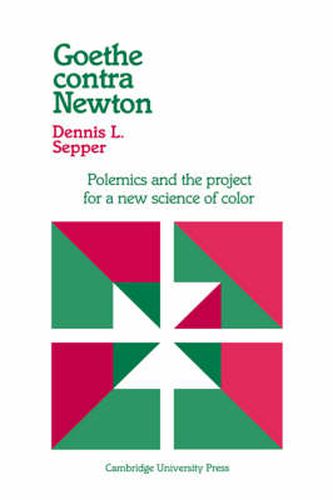Readings Newsletter
Become a Readings Member to make your shopping experience even easier.
Sign in or sign up for free!
You’re not far away from qualifying for FREE standard shipping within Australia
You’ve qualified for FREE standard shipping within Australia
The cart is loading…






This book explains the background and rationale of the German poet Johann Wolfgang von Goethe’s notorious attack on Isaac Newton’s classic theory of white light and colors. Though the merits of Goethe’s color science, as advanced in his massive Zur Farbenlehre, have often been acknowledged, it has been almost unanimously proclaimed invalid as physics. How could Goethe have been so mistaken? In his book, Dennis Sepper shows that the condemnation of Goethe’s attacks on Newton has been based on erroneous assumptions about the history of Newton’s theory and the methods and goals of Goethe’s color science. By illuminating the historical background and the experimental, methodological, and philosophical aspects of Goethe’s work, the author shows that his color theory is in an important sense genuinely physical and that, as simultaneously poet, scientist, historian, and philosopher, Goethe managed to anticipate important twentieth-century research not only in the history and philosophy of science, but even in color science itself.
$9.00 standard shipping within Australia
FREE standard shipping within Australia for orders over $100.00
Express & International shipping calculated at checkout
Stock availability can be subject to change without notice. We recommend calling the shop or contacting our online team to check availability of low stock items. Please see our Shopping Online page for more details.
This book explains the background and rationale of the German poet Johann Wolfgang von Goethe’s notorious attack on Isaac Newton’s classic theory of white light and colors. Though the merits of Goethe’s color science, as advanced in his massive Zur Farbenlehre, have often been acknowledged, it has been almost unanimously proclaimed invalid as physics. How could Goethe have been so mistaken? In his book, Dennis Sepper shows that the condemnation of Goethe’s attacks on Newton has been based on erroneous assumptions about the history of Newton’s theory and the methods and goals of Goethe’s color science. By illuminating the historical background and the experimental, methodological, and philosophical aspects of Goethe’s work, the author shows that his color theory is in an important sense genuinely physical and that, as simultaneously poet, scientist, historian, and philosopher, Goethe managed to anticipate important twentieth-century research not only in the history and philosophy of science, but even in color science itself.